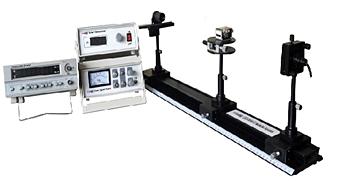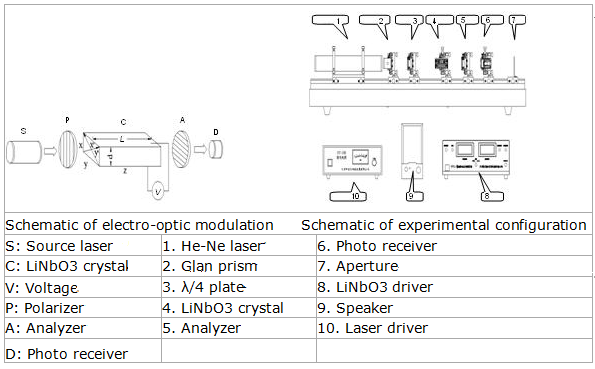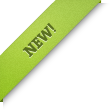
ALL CATEGORIES
COMPANY INFO

Delivery Fee : $0.00
Quantity :
| Part NO. : | DCFBG-series |
| Datasheet : |

|
| Availability : |
LEOI-33A
Experimental System for Crystal Acousto-Optic Effect - Enhanced Model

Acousto-optic effect is based on the change in the refractive index of a medium due to the presence of sound waves in the medium. This creates a refractive index grating in the material that can be used to diffract light. It provides a powerful means to the control of the frequency, direction, and intensity of a laser beam. Employing acousto-optic effect, acousto-optic devices such as acousto-optic modulator, acousto-optic deflector, and tunable acousto-optic filter have been applied significantly to areas such as laser technology, optical signal processing, and integrated optical communication.
This experimental system consists of an acousto-optic modulator, a diode laser, a signal generator, a photo-receiving device, and an optical bench with carriers. There are three options of the photo-receiving device, i.e. a photo-cell with amplifier (option 1) for manual data acquisition, a CCD (option 2) for real-time data display on an oscilloscope, and a CCD with automatic data acquisition for use with a PC (option 3).
Application
1. Compare Raman-Nath diffraction with Bragg diffraction.
2. Measure acousto-optic deflection in terms of diffraction angle versus ultrasound frequency.
3. Measure intensity of zero order and 1st order light versus ultrasound power.
4. Measure bandwidth and central frequency of acousto-optic device.
5. Measure diffraction efficiency of acousto-optic device.
6. Measure traveling velocity of ultrasound wave in acousto-optic device.
7. Simulate optical communication using acousto-optic modulation technique.
Specification
|
Ultrasound Signal Source |
Frequency: 80 - 120 MHz adjustable |
|
Output power: max 1 W, adjustable |
|
|
With modulation input port |
|
|
Diode Laser |
>3.0 mW @650 nm |
|
Acousto-Optic Device |
Center frequency: 100 MHz |
|
Bandwidth: 80 - 120 MHz |
|
|
Effective aperture: 1 mm |
|
|
Transmissivity: >96% |
|
|
Refractive index n = 2.386 |
|
|
Bragg angle: 17.4 mrad |
|
|
Polarization of input light: any |
|
|
Optical Bench |
0.8 m, with 3 carriers |
|
Transmitter |
With internal musical signal & external modulation input ports |
|
Receiver |
Connected to a photocell, with speaker |
|
Photocell Detector (option 1) |
With 0.1 mm reading ruler & amplifier, connected to galvanometer |
|
CCD (option 2) |
pixel number: 2592; size: 11×11 μm; spectral range: 0.3~0.9 μm |
|
with synchronization/signal ports, connected to an oscilloscope |
|
|
CCD and Data Acquisition (option 3) |
USB connected to PC, with application software |

Related Items
|
10um series of optical fiber |
10um series of optical fiber |
10um series of optical fiber |
 |
|

|










 编辑
编辑